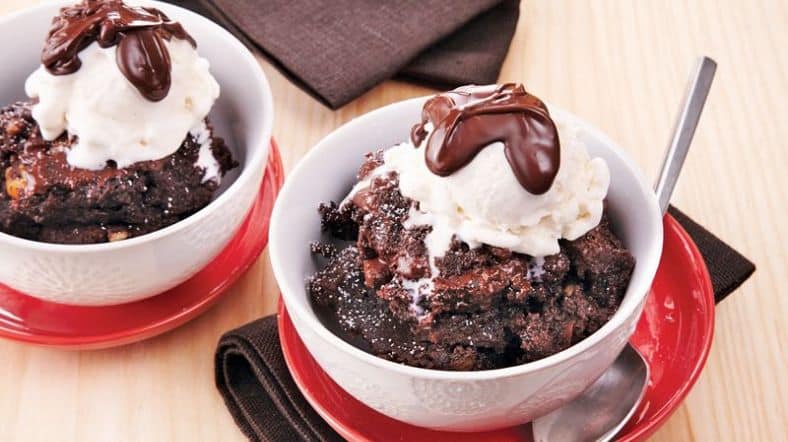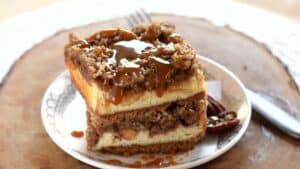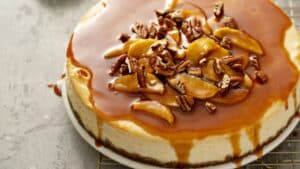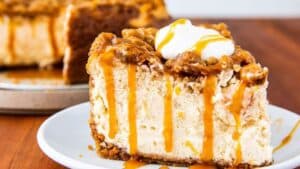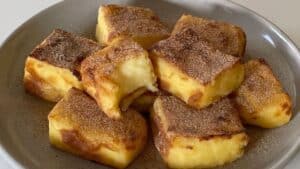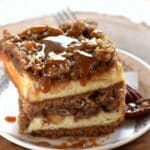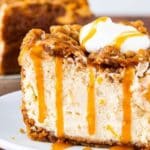This ain’t your average brownie recipe. Not even close.
Slow cooker brownie pudding is what happens when molten lava cake and a fudgy brownie decide to shack up and raise a family. It’s rich, it’s indulgent, and best of all you barely lift a finger.
And here’s the kicker: when done right, it tastes like you’ve spent hours tempering chocolate and babying a water bath. But nah you dumped it in a pot and went about your life. That’s culinary sorcery.
If you’re a professional chef, pastry artist, or even a hardcore food stylist, this recipe holds layers (pun intended) of potential. It’s not just some lazy-day dessert. Done right, it can be plated and elevated into something that stops guests mid-sentence.
Let’s dig deeper.
What Exactly Is Slow Cooker Brownie Pudding?
Alright, imagine this: the top layer is cake-like and cracks slightly when you spoon into it. Underneath? A silky, warm, almost pourable center—like the richest hot fudge sauce you’ve ever tasted. And the entire thing is cooked low and slow. No oven. No bain-marie.
So yeah, this ain’t just some dump-and-stir dessert. It’s a calculated alchemy of moisture, time, and fat.
Most recipes rely on a simple brownie batter—cocoa, butter, eggs, sugar—but the secret sauce lies in how the heat from the slow cooker activates that self-saucing effect. That happens due to two layers: a dense batter base and a thinner, watery topping that seeps through and becomes pudding-like.
It’s part physics, part witchcraft.
Why It Works So Well in a Slow Cooker (Science & Sorcery)
Slow cookers create a steamy, consistent low heat environment—around 170–280°F—which is ideal for retaining moisture. Unlike ovens, which dry out the edges before the center’s set, a slow cooker cradles that batter like it’s swaddling a newborn. It cooks from all sides, letting the starches set while the sugars melt slowly into a glossy pudding.
The Maillard reaction—that delicious browning that gives us crust—is more subtle here. That’s why you get that soft, slightly spongy brownie “cap” and a gooey middle. The steam keeps the sugar from crystallizing too early, so the texture stays lush.
And let’s talk emulsification. The fat content (usually butter, sometimes oil) binds with the cocoa solids and sugar while cooking. It’s low and slow, but it never splits. That’s crucial.
Fast cooking methods? They break your sauce. Slow cookers hold it together like a tight jazz band.
Let’s Break Down a Real Recipe
Here’s a solid, professional-grade version with ratio notes, for those who know how to think in baker’s math:
Dry Ingredients:
- 150g all-purpose flour (100%)
- 60g unsweetened cocoa powder (40%)
- 200g granulated sugar (133%)
- 1.5 tsp baking powder
- Pinch of salt
Wet Ingredients:
- 120ml whole milk (80%)
- 60g unsalted butter, melted (40%)
- 1 egg
- 1 tsp vanilla extract
Sauce Layer:
- 150g light brown sugar
- 25g cocoa powder
- 350ml boiling water
Yep, you read that right. You pour boiling water on top of the batter. That’s the magic. It sinks, it steams, it forms the pudding as it cooks.
Cook it on LOW for about 2 to 2.5 hours. Don’t touch it. Don’t peek. Just trust the process.
Tricks Pros Use to Elevate It

Now, if you’re cooking for a restaurant, pop-up, or even a refined plated-dessert event—don’t serve this thing raw outta the pot. It deserves more.
Try these professional flourishes:
- Fold in chopped Valrhona or Callebaut chocolate before cooking. Not chips. Real couverture chocolate. You’ll get gooey pockets that resist full melt.
- Add a teaspoon of instant espresso powder to deepen the cocoa profile. It won’t taste like coffee. It’ll taste like a richer brownie.
- Spike the water topping with bourbon. Trust me on this. The alcohol cooks off but leaves behind a sultry depth.
- After cooking, rest it 10 minutes before serving. That gives the pudding time to stabilize slightly, while staying warm and molten.
Then, pair it. Salted caramel gelato, a quenelle of whipped mascarpone, or even a drizzle of crème anglaise if you’re feeling French about it.
Common Mistakes and How to Avoid Them
Even pros mess this up. Here’s how:
- Overcooking: This one’s brutal. Go past the 2.5-hour mark, and the pudding will dry out. You’ll end up with just a soft cake. Still tasty, but not pudding.
- Undermixing dry ingredients: You gotta whisk that cocoa well. Lumps of cocoa don’t hydrate in the pot. Sift if you need to. Brownie pudding doesn’t forgive clumps.
- Wrong cocoa: Do not use Dutch-processed cocoa unless the recipe was built for it. Natural cocoa reacts with baking powder properly. Dutch is neutral. You’ll get a flat-tasting, weird-textured mess.
- Too much peeking: Opening the slow cooker lid drops the temp by 10–15 degrees instantly. That screws up the self-saucing.
Just set it and walk away.
Data-Driven Insights: Is It Popular?
Yes. Wildly.
According to Google Trends, searches for “slow cooker brownie pudding” spike every November through February. Cold weather = chocolate cravings. Pinterest pins for similar recipes get over 2 million saves annually.
Even Bon Appétit featured a slow-cooker chocolate dessert recently, which shows it’s moving from the “home cook” niche to serious food media.
Restaurants are even adopting similar desserts under names like “Molten Chocolate Basin” or “Brownie Fondant Crater.” Sounds fancy. It’s basically this.
Case Study: Plating for High-End Service
Chef Adeline Marceau of Lyon’s Le Chocolat Souterrain serves a version of brownie pudding as a plated dessert with smoked chocolate soil and frozen cocoa air. She uses a Pacojet to spin a bourbon-milk sorbet that sits next to the warm pudding like a flavor bomb.
Her base? Slow-cooked brownie pudding. But she uses Valrhona Guanaja 70% in both the batter and the sauce. It’s proof: you don’t need molecular tricks when the base is flawless.
Misconceptions About This Dessert
“It’s too simple for fine dining.” False. The core flavors are deeply nostalgic—chocolate, butter, sugar—and that’s what sells. Dress it up and it can headline a menu.
“It won’t hold shape on a plate.” Also false. Let it rest slightly. Use a hot spoon to scoop. Plate with textures: crushed hazelnuts, chocolate bark, tuile, or spiced whipped cream.
“It has to be served warm.” Actually, you can chill it and serve it parfait-style in a layered dessert with mascarpone cream and cocoa nibs. The texture firms up beautifully.
Emerging Trends and Variations
2025 menus are pushing reinterpretations:
- Vegan version: Replace butter with coconut oil and eggs with flax. Use oat milk. Still saucy. Still works.
- Savory twist: Add Aleppo pepper or smoked paprika to the cocoa. Serve with goat cheese mousse. Sounds wild. Tastes like magic.
- Mini versions: Use 4oz ramekins in a multicooker with water bath insert. Serve single-portion puddings at events or brunch buffets.
- Alcohol infusions: From Grand Marnier to spiced rum, pros are sneaking liqueurs into the hot water layer. Adds aroma and flavor depth.
Actionable Tips for Pros
- Test cook time in your specific slow cooker before service. Every unit is different.
- Batch it and rewarm in the steam oven. It holds well for 24–36 hours refrigerated.
- Train your staff to plate it hot but neatly. Sloppy plating kills mood.
- Use silicone molds or heat-safe glass bowls if you want portion control.
- Push the pairing—think wine-poached pears, stout reductions, or white chocolate cream.
Final Thoughts
Slow cooker brownie pudding is no longer just grandma’s weekend treat. It’s a legit player in modern dessert programs—rich, flexible, scalable. You can make it elegant. You can make it edgy. Or keep it cozy.
It’s all in the hands of the chef.
So next time you need a show-stopping finish with low lift? Forget the soufflé. Slow cook your way to dessert glory.
